Convert Mohr Circle Stress Data to Real-World Stresses
Steven Dutch, Professor Emeritus, Natural and Applied Sciences, University of Wisconsin - Green Bay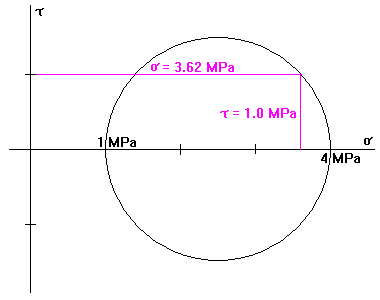 |
If rocks are subjected to a minimum stress of 1 MPa and a maximum stress of 4 MPa, what is the orientation of a plane with normal stress 3.62 MPa and shear stress 1.0 MPa?
First we plot the Mohr Circle and locate the point corresponding to the given stresses. |
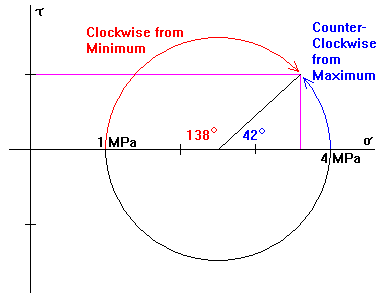 |
Draw a radius from the center of the circle to the point corresponding to the given stresses. Measure the angles from the maximum and minimum stress directions and note the sense of each angle. |
Below, we construct the real-world stress state. The maximum and minimum stresses are perpendicular to each other. Let's plot the minimum stress on the horizontal axis.
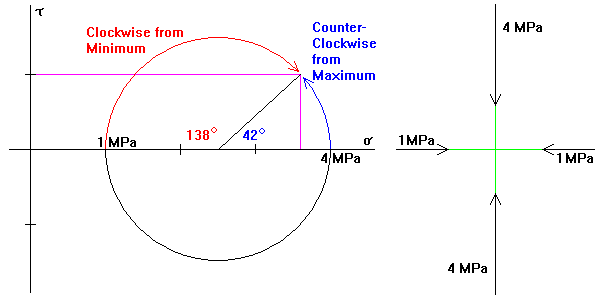
Next (below) we recall that angles in Mohr space are twice the real-world angles. So we divide each angle by 2 and measure from the corresponding stress, always in the same sense as on the Mohr Circle. Plot the line (red, right) of the correct orientation.
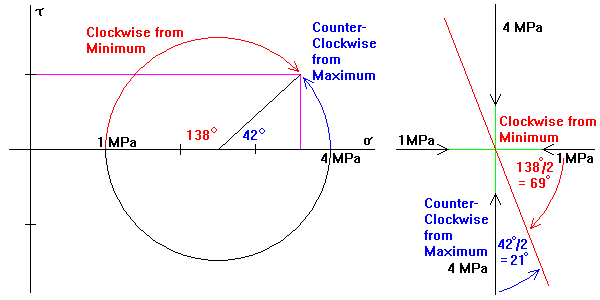
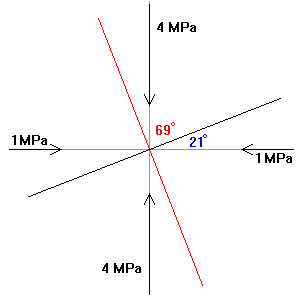 |
Recall that points on the Mohr Circle always correspond to the poles to planes. So the plane with the given stress state is perpendicular to the line found in the previous step.
The normal stress is 3.62 MPa and the shear stress is 1.0 MPa. The 4 MPa stress is at a high angle to the plane, so a normal stress of 3.62 MPa is reasonable. The 1 MPa minimum stress is inclined to the plane, so it can't possibly result in a 1 MPa shear stress on the plane. The only way the shear stress can be 1 MPa is if it's created by the 4 MPa stress. The 4 MPa stress would push rocks above the plane to the left and below the plane to the right, so the shear is left-lateral. |
Converting to Real-World Orientations
The example above plots the principal stresses on neat horizontal and vertical axes, looking down the plane with the desired stress conditions. You then have to rotate the diagram to fit the real-world data. If you know the maximum stress is oriented along azimuth 135, you need to rotate the diagram accordingly. If the plane is not vertical, you will have to rotate the stress directions in three-dimensions, possibly using a stereonet.
Return to Course Syllabus
Return to Techniques Manual Index
Return to Professor Dutch's Home Page
Created 22 November 2000; Last Update 22 November 2000